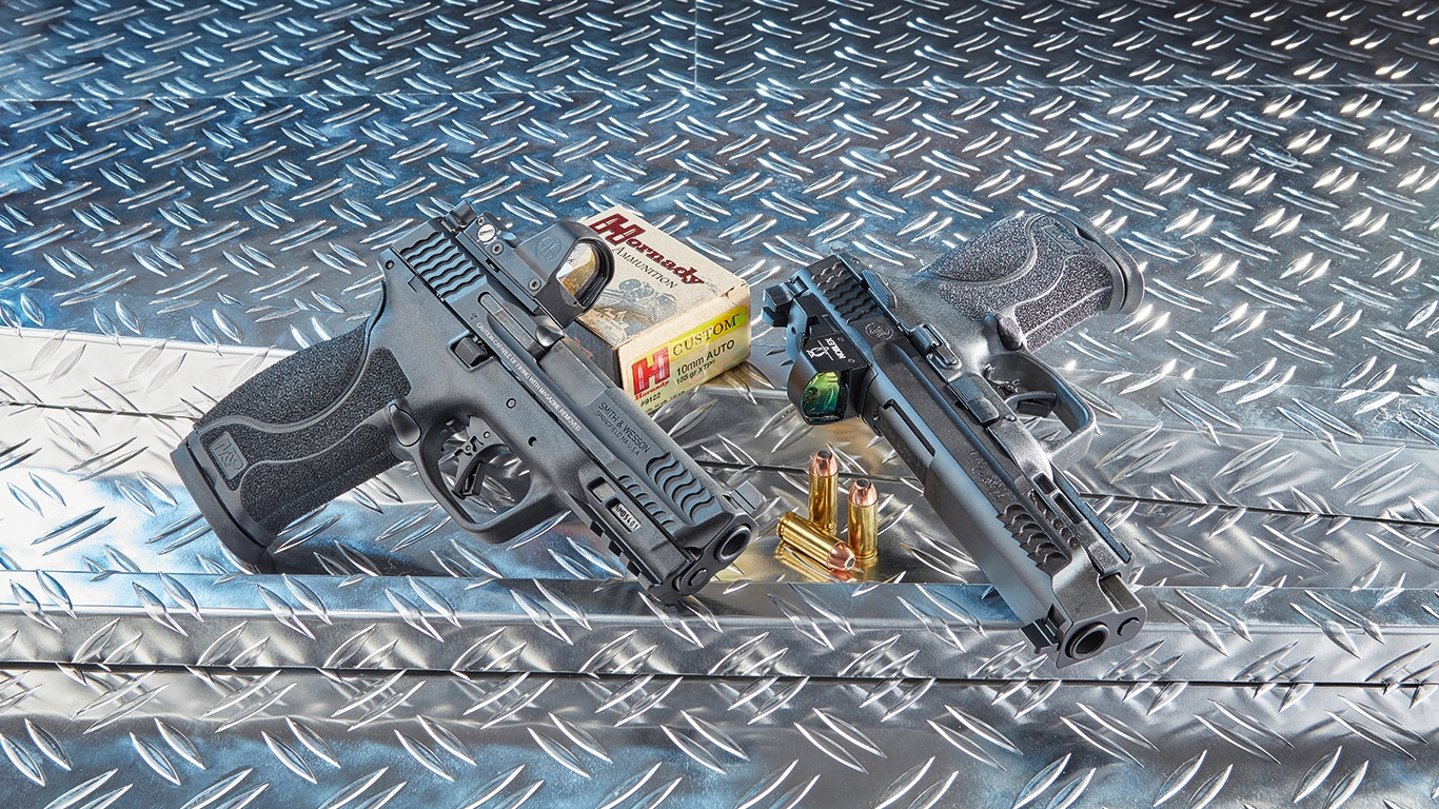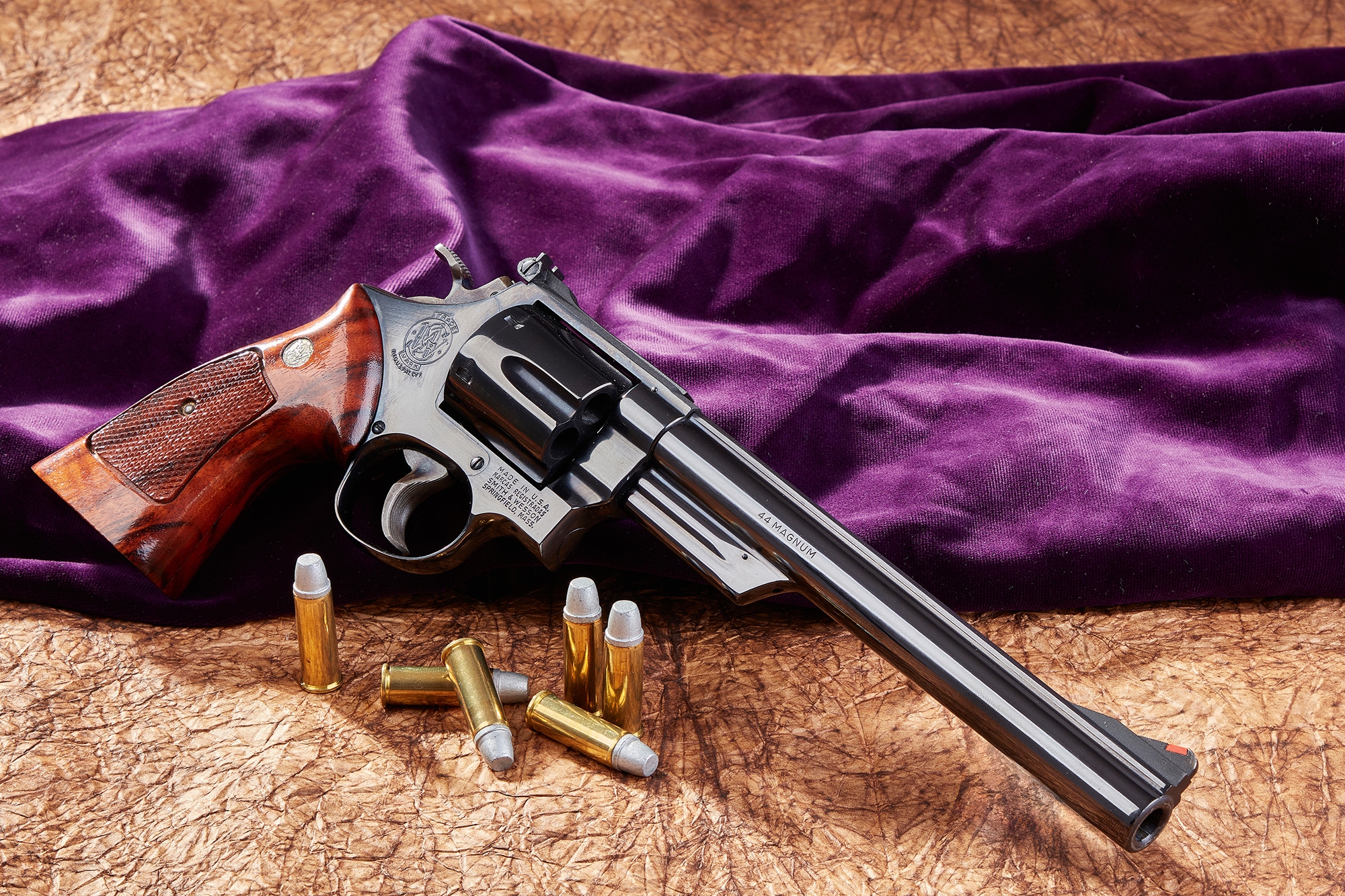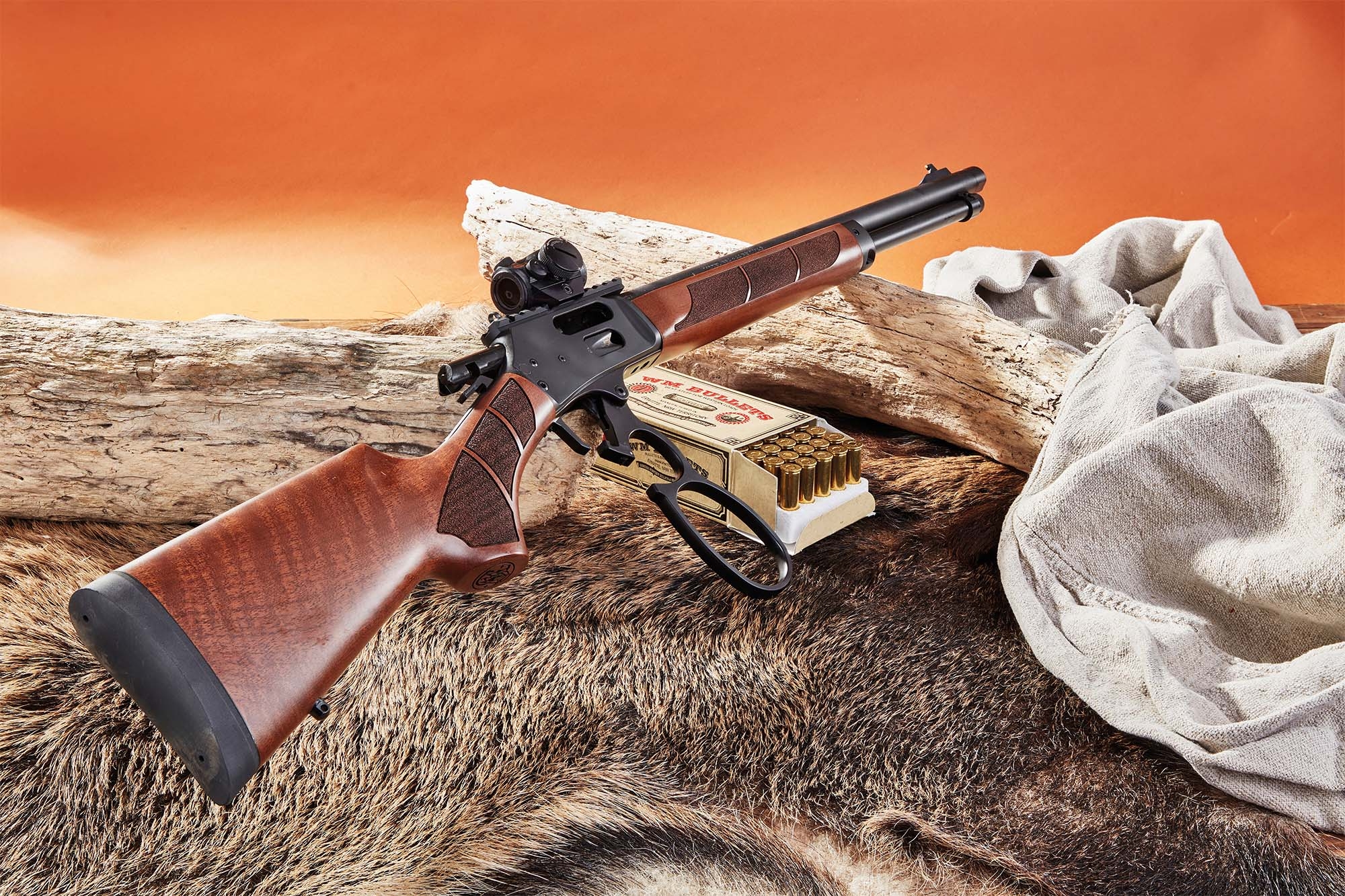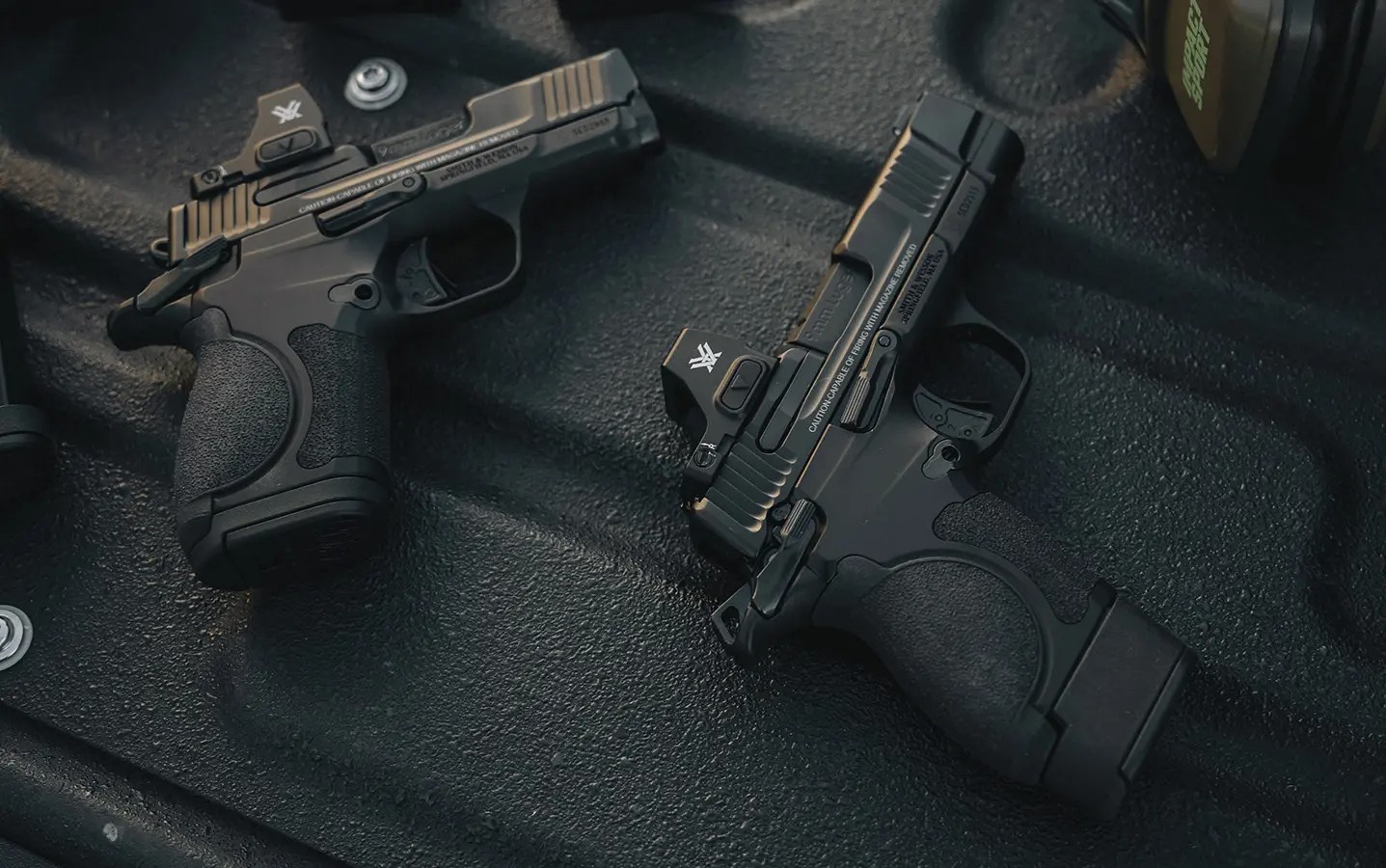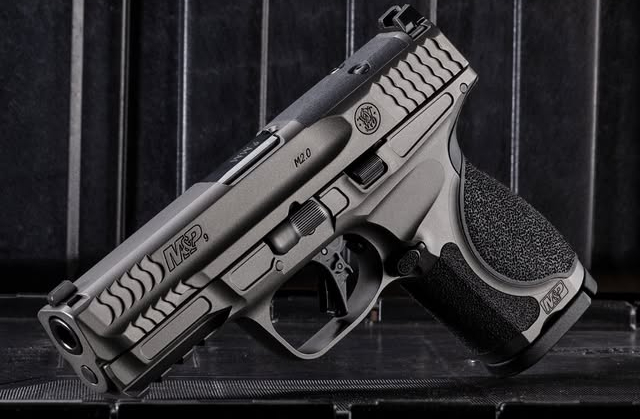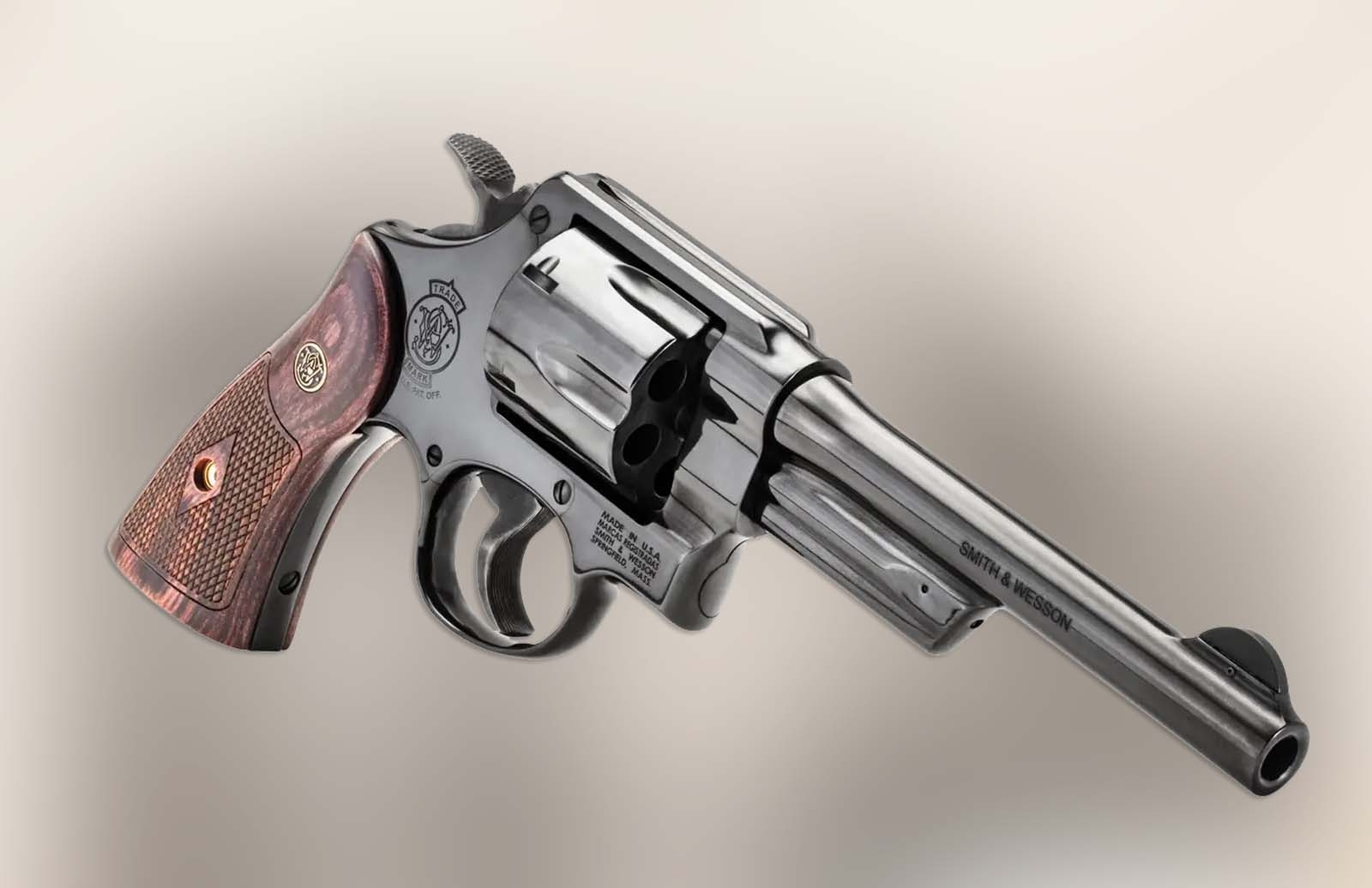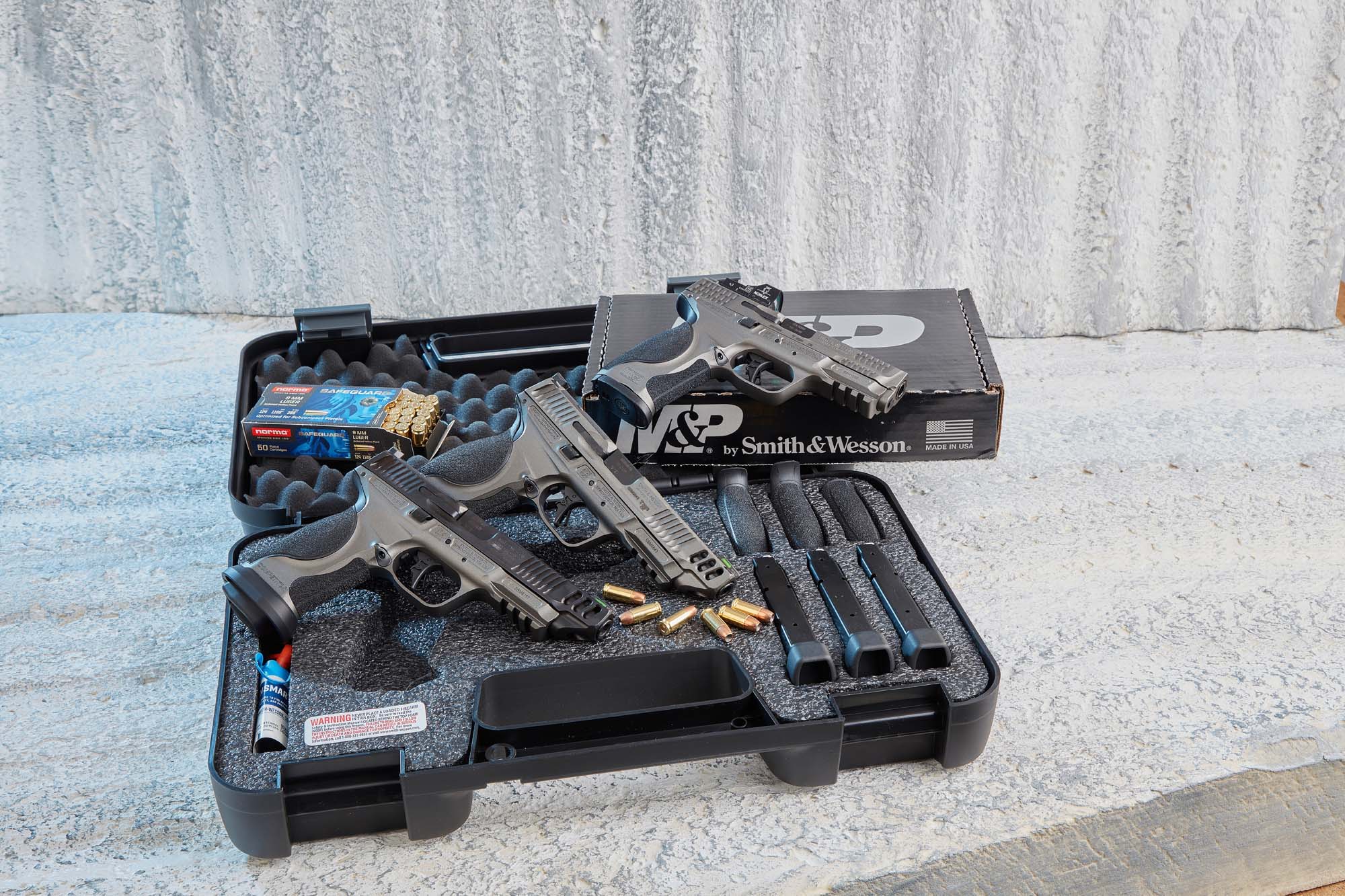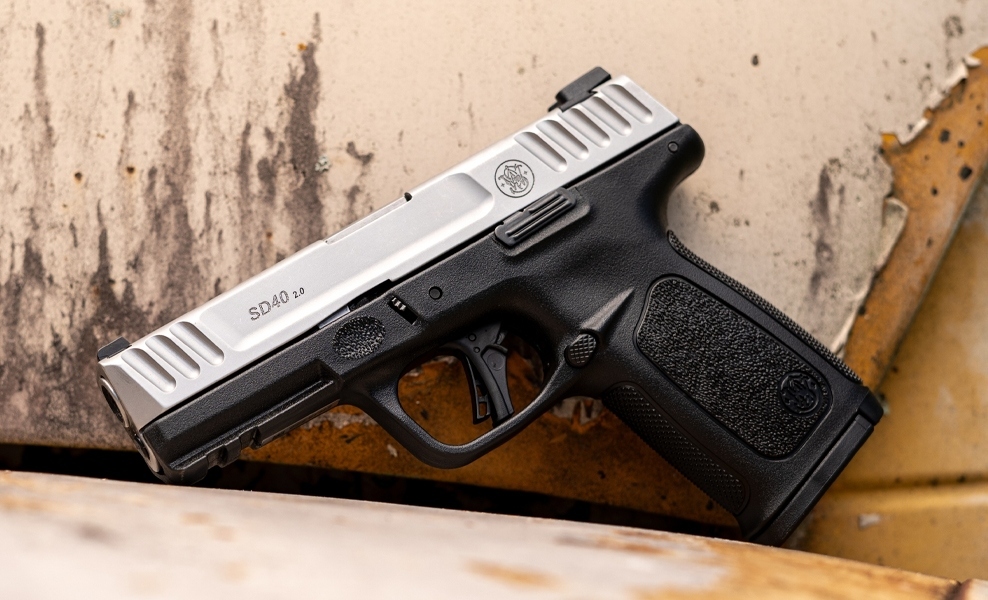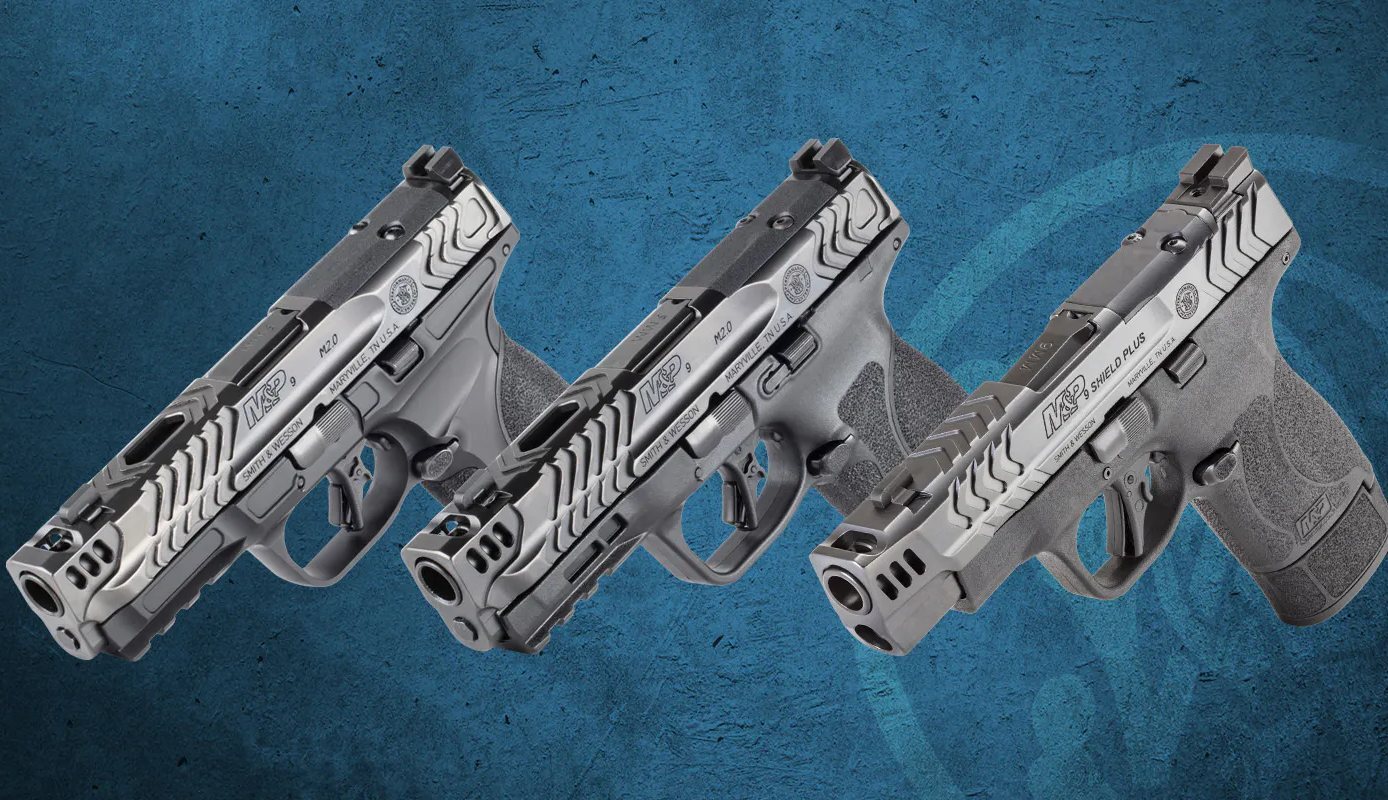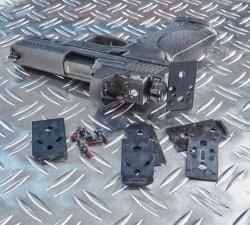
In response to the "Miami shooting" incident, in 1986 the FBI began looking for a higher-power cartridge. The 10mm Auto initially offered some advantages: it was significantly more powerful than the 9mm Luger, which had fallen out of favor with the FBI, and easily topped the performance of the .45 ACP with one more round in the magazine in a Colt Delta Elite (1911 platform). The little-known 10mm Auto at the time had been on the market for several years. It was co-developed around 1980 by Colonel Jeff Cooper, one of the initiators of IPSC. In 1983 Norma Precision introduced the cartridge, and with the Bren-Ten came the matching gun. Smith & Wesson also adapted the 10mm Auto in their Model 1076 pistol and won the FBI's bid against Colt. In 1989, the internationally known agency adopted the pistol and ammunition for service. However, shortly after its introduction, many FBI agents, especially females, criticized its heavy recoil. Depending on the load, the 10mm Auto was around and over 750 joules – in the range of a .357 Magnum caliber revolver. Development soon led to the .40 S&W featuring a weaker 10 mm load (FBI-lite). No sooner had the new ammunition been introduced than its service life was over. The 1076 S&W pistol was manufactured in small quantities – about 2,400 pieces – from 1989 to 1993. It differs from the basic model for its three-dot Trijicon sights, a different trigger, as well as the missing magazine safety. For the FBI, single-stack magazines were also available with 11 and 15 rounds instead of 9. Around 1990, the FBI paid $295.00 for a S&W 1076 with two 9-round, four 11-round and one 15-round magazine. After retirement, few FBI pistols entered the civilian market, now highly sought after collector's guns. Depending on condition, history, number of magazines, and whether the original box is in good condition, prices range from $1,500 to $3,000.
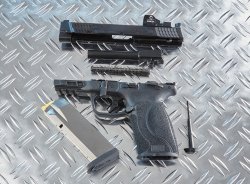
Since 2021, that is after about 28 years, Smith & Wesson again offers a full-size pistol in 10mm Auto. The basis is the M&P already introduced in 2005. To make a 10mm version basing on a service pistol previously manufactured in weaker calibers (9mm Luger, .40 S&W and .45 ACP) speaks for the quality of the original platform. After all, the adaptation to the 10mm Auto did not require any major changes. Sure, an adapted recoil spring had to be made, together with a longer chamber. The bright yellow follower of the 15-round magazine was also adapted. Otherwise, the M&P remains true to itself: a fiberglass-reinforced polymer grip frame with four backstraps, a quirky disassembly operation with a sear deactivation lever, and the lush equipment with seven adapter plates. The "positive list" of reflex sights for the Ten Auto includes rather expensive derivatives such as Trijicon, Leupold, Docter or C-More.
Full view: with the Leupold Delta Point Pro reflex sight or the Noblex NV Sight II plus Law Enforcement?
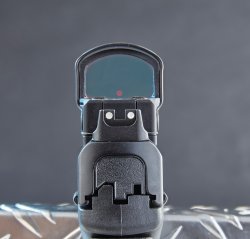
We were frowning after mounting the Leupold reflex sight: despite the extra-high rear sight and front sight, the testers saw black. Not through the optics, but the base of the Leupold is so high that even the rear sight, which is a good ten millimeters high, does not make it possible to deliver a "co-witnessed" target image when the red dot fails. The explanation lies in the use of the reflex sights included by Smith & Wesson in their positive list, which is often officially and militarily approved. Being extremely rugged, they are either very expensive, such as the Trijicon RMR, about 900 euros, or cheaper yet solidly built, such as the Leupold Delta Point Pro for about 560 euros. The lowest common denominator are probably the IPSC reflex sights from Noblex (formerly Docter), starting at around 450 euros.
The Leupold Delta Point Pro and the Noblex NV Sight II plus Law Enforcement (MSRP: 529 euro) were the two sights on our test guns for the shooting range. During assembly, in addition to a rich choice of adapter plates, the selection of mounting screws was also pleasing; these were already factory prepared with locking varnish. Once again, we frowned when the compact S&W Military & Police lay next to the standard model. Its slide and barrel are about 15 mm shorter – but that was it for the differences. The reason for the marginal difference probably lies more in the import restrictions of some countries than in the effort to produce a "real" compact model with a shorter grip.
On the range with the Smith & Wesson M&P TS and NTS pistols in 10mm Auto
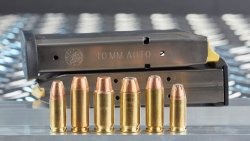
The impacts of the bullets on the shooting range were where the red dot of the optics pointed, and even the most powerful load with over 800 joules shot surprisingly controllably and very accurately. The solution to the riddle are the backstraps of the M&P models, whose correct choice proves the usefulness of variable grips. Even today, many consider interchangeable grip scales or backstraps to be nonsense – it's nice when someone can tame the 9mm Luger or .40 S&W through sheer strength. Gals or daintily built jacks already have problems shooting fast strings with these relatively low recoil values if the ergonomics of the grip do not fit the person's hand.
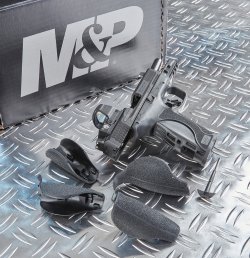
Lots of mass, as with a Desert Eagle, is not an option either. What is reduced in recoil due to the high weight is reflected on the negative side when aiming or handling, as well as by the powerful format. The M&P, on the other hand, is in the range of normal service pistols in all dimensions as well as weight. The test was slightly limited by the current ammunition shortage.
For this reason, the no longer available PMC load was fired, which promptly delivered the highest energy value. However, this does not matter for the subjective evaluation of felt recoil. In handling, the surprisingly well-defined two-stage trigger was pleasing on the pistols, which enabled a clean release despite the initially relatively high trigger weight.
Initially high means that after application of Liqui Moly GUNTEC gun oil, the pull weight dropped from around 2,600 grams to just under 2,200 grams. Rested and with the right reflex sight, groups around 60 millimeters are no magic. There were no malfunctions in the test.
Smith & Wesson M&P TS and NTS in 10 mm Auto specs and price
| Manufacturer: | Smith & Wesson |
| Model: | Military & Police M2.0 Optics Ready |
| Caliber: | 10mm Auto |
| Magazine Capacity: | 15 rounds |
| Dimensions (LxWxH): | 200/185*x32x142 mm |
| Barrel Length: | 115/102 ** mm |
| Twist Rate: | 1:406 mm (1:16") |
| Trigger Pull Weight: | 2,000 g "oiled” approx. |
| Weight: | 860 g *** approx. |
| Price: | 937euro (921 euro Compact model) |
| Equipment: Seven adapter plates, four interchangeable backstraps, one spare magazine, cable lock. * = Compact model length, **= Compact model barrel length, *** = Compact model weight including red dot. | |
Smith & Wesson M&P TS and NTS: test conclusion
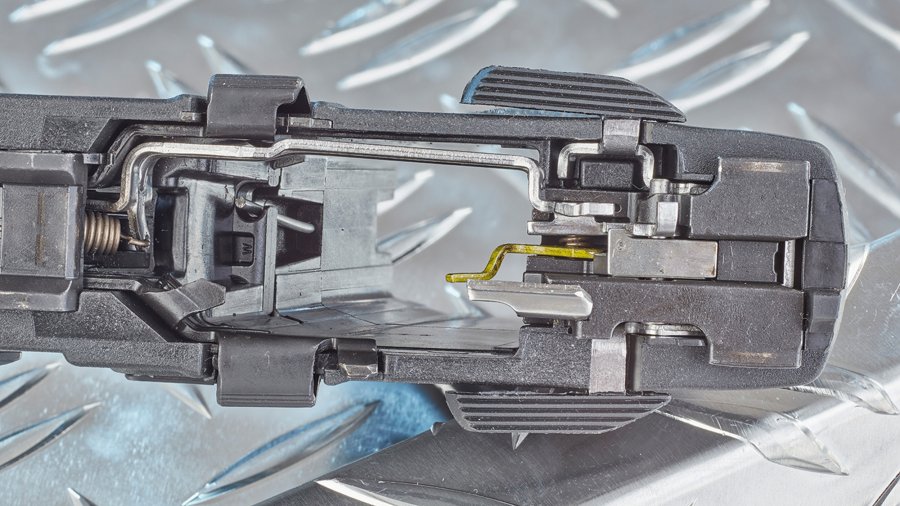
We will soon test new 10mm models from other manufacturers as soon as they are available. But it looks like S&W has hit it big here. The combo of M&P and 10mm Auto allows even less trained shooters to get magnum power from a standard pistol. Even if "only" a known cartridge came together with a known pistol, the result is convincing. For all those who want magnum power from a normal service pistol, a clear buy recommendation.
What we liked: | What we liked less: |
- Well controllable magnum performance of the 10mm auto - Top price-performance ratio of the S&W pistols | - Relatively large gap between the slide and the frame grip |
For more information about the Noblex red dot sight please visit the Noblex website.


